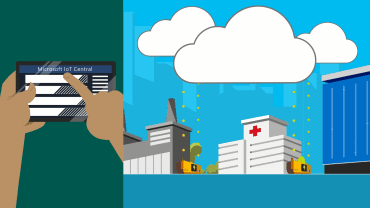
An IBM survey finds that more than half of businesses are using real-time data from customers, including text and activity tracking.
Real-time data and analytics – tied to the rise of the Internet of Things – is behind what a new industry survey is calling a dramatic surge in the use of big data and analytics over the past year.
That’s one of the key takeaways from a new study published by the IBM Institute for Business Value. The study, put together by a team of IBM analysts, led by Glenn Finch, Steven Davidson and Dr. Pierre Haren, is based on a global survey of 1,226 organizations.
This is the era of the data ecosystem, Finch and his co-authors state. Sixty-five percent of respondents are tapping into cloud and ecosystems for data and analytics management, the study finds. The IoT – the digital connections among organizations and physical assets created through the Internet – “opens up new horizons of data, both internal and external to the organization,” they state.
The adoption of IoT extends well beyond product or systems monitoring as well. Most business users, they observe, investing in the IoT are targeting a better customer experience (32%), improved product quality (31%) and cost reduction (27%).”
Only seven percent of study respondents said their organizations had no planned investments in IoT technologies, the authors add. “Given that our sample set includes 22 different industry groups, this not only confirms the pervasiveness of IoT use cases, but their applicability across most industry segments.”
Focus on the Customer
The IBM study finds that a majority of organizations, 54%, are developing analytics with customer-generated data such as activity tracking, health monitors and smart appliances.
Another 51% are implementing analytics with customer-generated text, such as website comments, emails, call-center transcripts. At least 40% are working with third-party data, and a similar number are currently working with real-time data and events. More than one-third, 34%, are working with sensors and actuators.
As part of this new emphasis on real-time data and analytics, Finch and his co-contributors say analytics takes on a much broader scope these days than in the past. It is no longer confined to analysts working in a room somewhere, grinding out occasional reports. Analytics is now embedded in every corner of organizations – and beyond.
Real-Time Decisions
To create value from customer, competitor and market data, organizations must also have the ability to respond and react to those signals within the appropriate business cycle, the report states. Two-thirds of organizations are now analyzing customer transactional data in real time, and about half are analyzing mobile and log data in real time.
In addition, the report advises that data analysis occur in the “right time” for decision making; “increasingly, this means ‘in real time.”
Eighty-two percent of respondents say IoT will have or has had a positive disruptive impact on their organizations. Another 80% cite the impact of streaming real-time data, and the same number see impact from cloud-based data or analytics services.
The IBM team also recommends incorporating a full range of external data into fact-based decision-making processes. “Data is available from a wide variety of external sources, including governments, reporting agencies, weather centers and social platforms,” they write. “When combined and analyzed, this can create a rich, more detailed understanding of who customers are as individuals, what clients want most, and how the world operates.”
Want more? Check out our most-read content:
Frontiers in Artificial Intelligence for the IoT: White Paper
Research from Gartner: Real-Time Analytics with the Internet of Things
Five Big Data Trends: Emerging Technologies
No Recalls: A Smart Testing Approach for IoT Devices
IoT Connectivity: What’s the Frequency?
Liked this article? Share it with your colleagues!





























